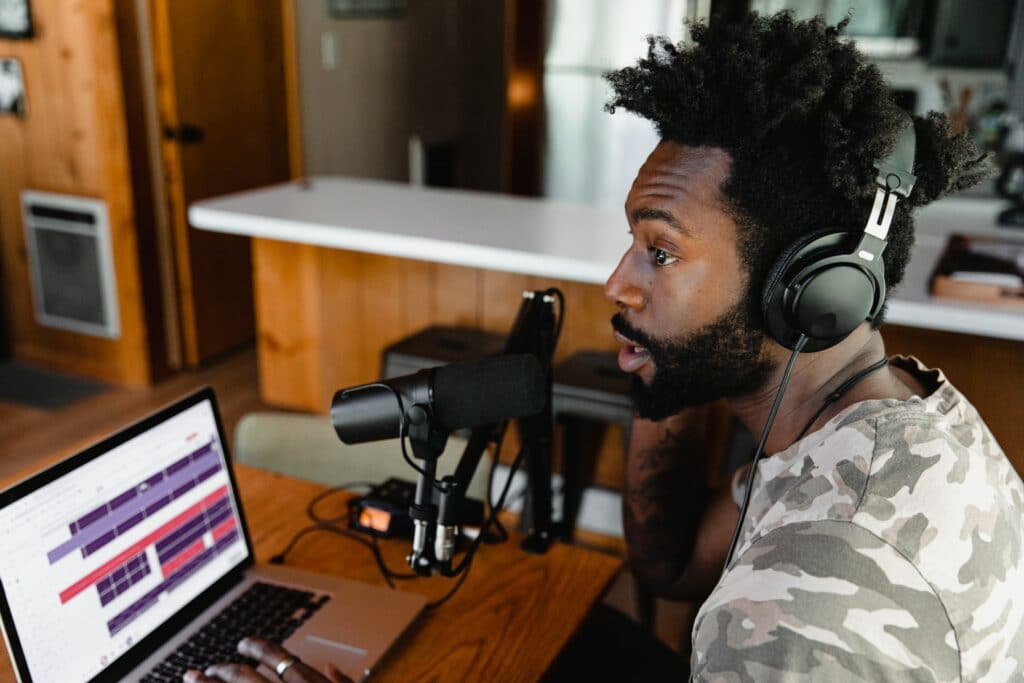Stream Better: Improve your microphone tone for that professional sound!
When it comes to upgrading your streaming equipment, we’ve argued a few times that audio is the first thing to pay attention to. Clarity of voice to most viewers can be more important than the quality of a webcam. Once you have a decent mic, however, you might be wondering how you can get that deep, boomy, bassy-sounding microphone tone that you hear in podcasts, talk radio, and basically any spoken word on the internet. Content creators have been replicating it for a little while now so we’re going to take a look at how you can recreate this professional microphone sound.
Placement
The most important thing straight off the bat for a professional microphone sound is microphone placement. The closer the microphone is to your mouth, the better it will pick up your voice and not your room. Many microphones have what is known as the proximity effect, which means the closer the microphone is, the greater the amount of lower frequencies (bassy sounds) are picked up. Some microphones like the EV RE-20 actually have tech built in to limit this effect, but basically, if you want to sound like Barry White, you gotta get close to that mic.
One important thing to consider with placement is how you will mount your mic. Articulating arms are pretty common, but can get pricey. If you have desk space, a simple microphone stand is always a good option. Get one with a nice weighted base that can go on your desk, this will minimize the amount of noise made if you’re using a keyboard at the same time.

Type of microphone
As I mentioned, different microphones have their own unique purposes and you should pick the correct microphone for your use case rather than trying to get a microphone that can do everything. That being said, the gold standard mic is the Shure SM7B. Pretty much any podcast and most streamers these days are using this mic for professional microphone sound. It doesn’t pick up too much background noise and the proximity effect will give you those quiet storm vibes
If you don’t have the budget, the Shure MV7 is basically the cheaper version and functionally the same with the addition being a USB mic. Other devices that work well are the Rode Podcaster and the classic Shure SM58. Types of microphones for content creators is something we’ve discussed here before so be sure to check out this handy guide!
EQ and Compressor
Now you’ve got the right microphone and it’s placed in the perfect spot, but you’re just not getting the professional microphone sound that you want? Well, now it’s time to add some EQ to the mix. XSplit Broadcaster has DSP plugins built-in and one of them is the EQ. Basically, EQs lets you target and boost or lower certain frequencies. Now everyone’s voice is different which means you will have to experiment to find the right frequency, but generally speaking around the 100-200 range is what you want to boost if you want more bass or presence. If you’re looking for more clarity, try the 4000-6000 range as well.
Setting up the EQ in XSplit Broadcaster is simple, simply head to Tools and click Audio Effects, which will open up a host of settings you can tweak. Applying some compression can help achieve a certain tone as well. As we’ve said, all voices are different so feel free to experiment and find that tone you want!
Now one thing we omitted is hardware compressors and EQ. That’s a bit outside the scope of this article, but the most important part is to get the right mic and get it as close as possible. This will really be a big factor in getting that professional microphone sound. If hardware compressors are something you’d like us to discuss, however, do let us know in the comments below and we can get a post out about them!
